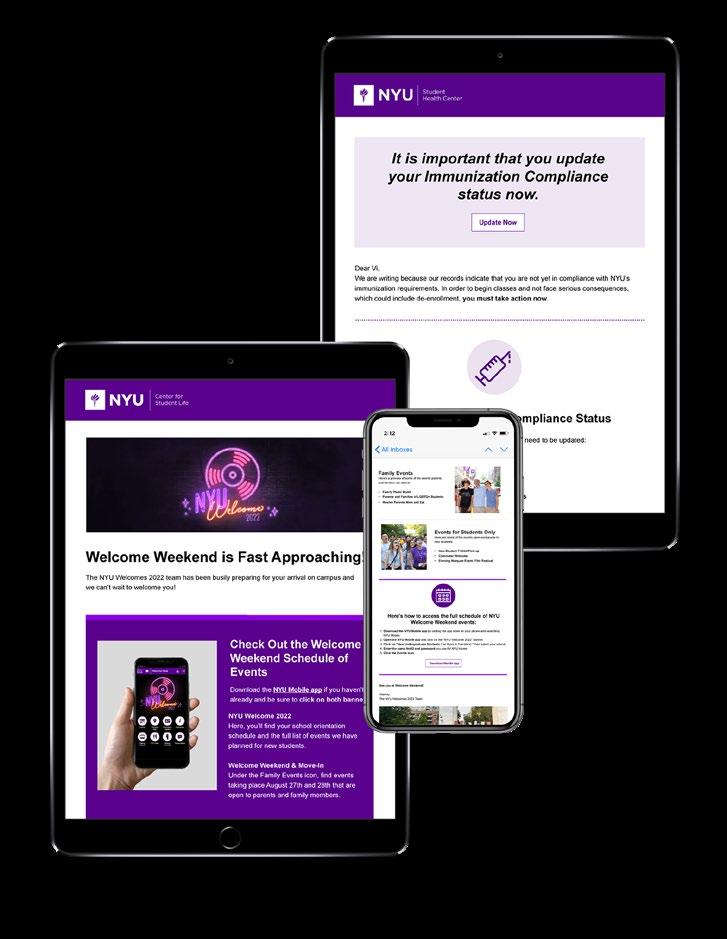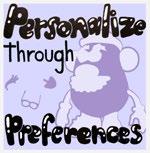E-mail Essentials 2023
A BRIEF GUIDE TO EFFECTIVE STUDENT EMAIL COMMUNICATION
An update to original research concluded in May 2020

An update to original research concluded in May 2020
In 2019, the Enrollment Management marketing team began an audit of all official, internal email communications sent to current students. Until that time, there was no clear, central record of the volume and content of email that the student body was receiving. A common refrain among University administrators was that “students don’t read email,” but without a deeper understanding of email communication on campus, this complaint wasn’t actionable, and there was no resolution in sight.
The initial audit ran from May 1, 2019 through May 31, 2020, and was rebooted from June 1, 2022 to May 31, 2023. This manual presents the quantitative and qualitative results of the 2022–23 audit and provides a framework for best practices to communicate with students via email, in order to help improve the email experience for all of us.
Hello, {first},
NYU students are busy doing amazing things, while simultaneously reading a lot of University-sent emails. Let’s take a look at what we send them and when, and compare this to what they may have received back in 2019–2020.

■ The original audit ran at the height of the global pandemic, so it’s likely there were more communications than usual going out to students during that period.
■ The dummy accounts were not enrolled in classes between February and April of 2023.
■ During the 2019 audit, 27.7% (239) of the emails were received between February and April. In the most recent audit, 23% (135) of emails were received during that same period.


86.9%
13.1%
School-Related Emails All Other Emails
13.1%
of emails came directly from the student’s school, while the rest were from central offices
12.6 9.6% EMAILS PER WEEK
2019–2020
11.5
2022–2023
This is a baseline that would increase depending on a student’s level of involvement in coursework, extracurricular activities, etc.
Email volumes naturally ebb and flow in accordance with the rhythms of student life, and tend to increase during the fall and spring semesters.
2019–2020 Email
2022–2023

Student insights and observations were translated into a set of eight actionable instructions for design and content generation for e-communications. These design principles were crafted through engagements with students, faculty, staff, leadership, and core and external stakeholder teams.

NYU is not underresourced, it’s underorganized. Instead of adding more, help students find clarity in moments of confusion.
Principle in Practice: You can help create a more synchronized experience for students by considering what information you may have already sent them before sending them a new message.

Always ask “what might we subtract?” and streamline navigation patterns down to their most basic routes.
Principle in Practice: Reassess your drafted email(s) and consider where you can cut down on copy. Also, think about ways you may be able to reduce the number of emails sent (i.e., using other means of communication, combining emails, etc.).

Include not just the what, but also the “why?” and the “so what?” Include at least one action item for what students can do next to address or resolve their issue.
Principle in Practice: Consider what the call to action is in your message and what steps students need to take next. Identify clearly who students should contact with questions and/or where they can find the answers they need.

Distinguish critical content from the crowd of other communications.
Principle in Practice: Think about how you can make essential information more prominent, like using a bulleted list to make the main points clearly stand out or design elements like font, color, etc.
Laundry lists of resources are overwhelming. In moments of urgency, students need—and expect— information that’s tailored to them.
Principle in Practice: Send messages that are tailored to students’ interests or provide support for where they

Too often, interactions with students are one-way streets. Students don’t just need information, they need to know their thoughts are being heard.
Principle in Practice: Create communications that are responsive to student needs. Check in with them to get their feedback on communication streams early and often.

Provide students the tools to customize and configure their own information flows.
Principle in Practice: Consider the information we know about students and utilize it to create personalized communication where possible, including using students’ preferred name.
Principle in Practice: Consider creating a communications calendar or a regular meeting with communications professionals, both in your department and outside of your individual unit, when appropriate. That way, you’re aware of what’s shared across departments. 3 7 4 8
A cohesive student experience requires staff and faculty to stay connected, too. Model cross-department collaboration to address student needs.
COMPREHENSIVE GUIDE
with best practices for communicating with students, including a breakdown of the ideal mentor personality, voice, and tone.
ACCESS THE GUIDE
QUICK-START GUIDE
a more bite-sized distillation of the Comprehensive Guide.
ACCESS THE GUIDE
CURATED PHOTO GALLERY
with stock images of students, NYU’s campus, and the surrounding area.
with pre-sized graphics for email communication, presentations, and more.
ACCESS THE GALLERY
FOR MORE INFO
studentcommunications@nyu.edu
ACCESS THE GALLERY